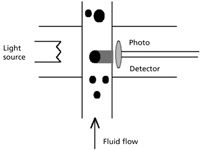The Causes and Implications of Glass Delamination
This article focuses on the history of glass delamination and methods that detect it, both from a compendial and a research perspective.
The appearance of visible flakes or glass lamellae in various pharmaceutical products contained in vials has sparked a series of product recalls over the past 18 months and initiated an industrywide conversation about the assessment of glass quality for pharmaceutical applications. Recent FDA communications have recommended that all pharmaceutical companies renew conversations with their suppliers on the topic of glass quality to ensure that patient safety and product quality are not compromised when a glass vial, cartridge, or syringe is the primary packaging component (1).
Several recent studies in the pharmaceutical industry have examined the causes of and factors that influence glass delamination. They recommended analytical tests that can assess the propensity of a pharmaceutical liquid to react with its primary glass container (2–4). Glass delamination, however, is not a new phenomenon. In 1953, Dimbleby recognized the seriousness of glass flakes in pharmaceutical products and prescribed a series of tests that could measure glass durability (5–8). According to Dimbleby, visual inspection to monitor the presence of glass flakes should not be the sole test for assessing glass–product compatibility.
A review of the glass-science literature reveals that the reaction of water and glass has been observed for nearly three centuries and has long been recognized as a problem in the preservation of glass antiquities (9–11). When glass surfaces are exposed to water, the network-forming oxides, such as silicone oxide (i.e., silica), leach from the surface, thus resulting in a glass chemistry that exhibits less resistance to chemical attack. This glass layer, which has different mechanical properties than the bulk substrate, will form flakes and spall (2, 3, 10). Corrosion mechanisms for glass are well identified (12–15). White identified six specific mechanisms of corrosion (15). The mechanism that best describes glass delamination, or weathering, is incongruent dissolution with the formation of noncrystalline layers. During this process, the gel layer of the glass that exists in the presence of water dries out and forms a pattern of cracks.
Figure 1 shows images obtained from the interior of glass vials. Dimbleby and Iacocca identified some of the factors that affect the durability of pharmaceutical glass, including the following:
- Terminal sterilization by autoclaving
- Thermal exposure during vial formation
- Glass chemistry
- Surface treatment, such as acid washing or ammonium-sulfate treatment
- The chemical nature of the liquid (3, 5, 7).

Figure 1: Scanning electron micrographs that show evidence of glassâliquid interaction, including a) a vial interior that has undergone delamination and shows signs of aggressive attack, and b) signs of modest glass-liquid interaction. No visible flakes were ever observed in the liquid. (ALL FIGURES ARE COURTESY OF THE AUTHOR)
Currently, visual inspection has been the dominant technique to detect the presence of glass lamellae. The visualization of flakes, however, is the last step in the delamination process. It is a lagging analytical indicator for a chemical incompatibility between the exposed glass surface and its environment. As long ago as 1935, Dimbleby recognized that visual observations of glass flakes were not sufficient. He recommended chemical analysis of the liquid in question for various factors, including alkaline content, dissolved elements from the glass, and shifts in pH. With the development of electron microscopy, surface analytical techniques, and quantitative analytical instrumentation, the titration techniques suggested by Dimbleby have been augmented.
Tests for glass–liquid interaction
The tests described in this section do not detect glass lamellae in pharmaceutical liquids, but rather detect chemical incompatibilities between glass and liquid months before glass flakes may be observed visually. These tests are leading indicators that delamination may occur.
Scanning electron microscopy of the vial interior provides the most direct evidence that the glass and the liquid it contains are interacting. Figure 1a shows a scanning electron micrograph of a vial interior that has undergone a high degree of delamination, and Figure 1b shows a micrograph of a vial that shows signs of glass–liquid interaction. Although some flakes can be seen in the latter image, the extent of corrosion is far less, and no evidence of the extreme pitting seen in Figure 1a is present.
The utility of some of the tests proposed by Dimbleby and others must be considered in the context of the pharmaceutical product. If the liquid is a solution containing a synthetic active pharmaceutical ingredient (API), the molecule itself can corrode the glass (2, 3). In these instances, tests of pH and of the concentration of various elements (e.g., silicon), as measured by inductively coupled plasma optical emission spectroscopy, can readily detect signs of glass incompatibility. Monitoring silicon is particularly relevant because the leaching of silicon is the first step in the delamination process. Other elements found in the glass may be detected in the parenteral solution, but they are not directly linked to the delamination. Figure 2 shows how pH and the concentration of silicon can change in a parenteral drug in which the API participates in the glass degradation.

Figure 2
The shifts in solution chemistry shown in Figure 2 do not present themselves so clearly in bioproduct formulations for several reasons. First, the protein does not (and cannot) contribute to the glass–liquid interaction because it is too large to disrupt the glass silicate network. Second, the pH of most bioproducts does not exceed 8.
Test methods for glass delamination
The interaction of a liquid with its glass packaging, however, is not the widely accepted definition of glass delamination. The formation of glass flakes becomes a formal quality issue when the flakes are detected by visual inspection. To date, visual inspection is the release test used to confirm product and glass quality.
Several challenges confront this approach. Glass delamination is a kinetic process that requires sufficient free energy and time for the silica to leach and the flakes to form. Depending upon the product, this process can require weeks to months. The time needed for release testing is not sufficient for delamination to occur. Material must be placed on stability to observe delamination, and preferably stored under elevated temperature conditions (i.e., above the stated storage and use temperatures) to stress the system.
Many questions have been raised about the ability of Hach HIAC light-obscuration instruments to detect nonvisible glass particles. Limited research has been published on the issue. Ennis et al. used HIAC testing to monitor the formation of nonvisible particles in vials in which delamination was occurring. All HIAC counts were within US Pharmacopeia limits, however (4).
A consideration of the principle of operation for light obscuration can yield insight into this question. Figure 3 illustrates the operating principle behind light obscuration. Single particles are presented in front of a light source and are detected either by their color or by their geometry. Certain shapes cause internal reflection and make the object appear dark. The latter scenario is best illustrated by glass spheres. Soda lime glass (e.g., window glass), when in the form of a plate, does not obscure light. As a sphere, however, it reflects light internally and appears to be dark. Thus, window glass can be detected. For platelike or flakelike particles, light will be transmitted, not obscured. The only opportunity to detect a flakelike particle is when the edges of the particle can be detected.

Figure 3: The measurement principle for light obscuration.
Laser-diffraction techniques have been used to monitor flake formation in delamination. The Spectrex laser particle counter detects glass flakes in aqueous liquids (3). The only challenge with this instrument is that it may not provide an absolute particle count. It does, however, clearly show trends in particle generation when delamination is active but cannot be detected by visual inspection. Additional research is required to select the instruments that are best suited for sizing and counting glass particles.
Implications for the pharmaceutical industry
Initially, the concern over glass flakes focused on product quality and patient safety. Recent data have shown, however, that foreign particulate matter such as glass flakes can serve as nucleation sites for protein and peptide fragment aggregation (16–19). Such aggregates have been shown to generate immunological effects and can render biopharmaceuticals ineffective, thus causing considerable risk to the patient (20).
Conclusions
Glass compatibility with pharmaceutical liquids is an ongoing industry challenge. The phenomenon is well described and understood in the literature. Existing analytical techniques can evaluate the suitability of glass packaging for parenteral liquids. These tests should be employed to detect potential problems. Visual inspection continues to be the standard method for detecting glass flakes, but it is a lagging indicator, not a leading one.
Acknowledgments
The author would like to recognize the efforts of the following people who have contributed to this investigation: Nick Toltl, research and development manager at SGS Canada; and Alan Shi, engineer at Medtronix. The author also would like to thank the following current and former employees of Eli Lilly and Company: Matthew Allgeier, research scientist of pharmaceutical sciences R&D; Xia Dong, principal research scientist for analytical sciences R&D; Michael Foubert, associate consultant chemist of analytical sciences R&D; Bethany Bustard, consultant chemist of manufacturing sciences and technology; Sheryl Peoples (retired); Jeffrey Hoefer, director of statistics, manufacturing science, and technology; David Crozier, retired; Nathan Milton, research advisor for pharmaceutical sciences R&D; and Tim Shelbourne, research scientist in analytical sciences R&D. This work could not have been accomplished without the support of the management of Analytical Sciences Research and Development in Eli Lilly and Company.
Ronald G. Iacocca is a senior research advisor in analytical sciences R&D at Lilly Research Laboratories, Eli Lilly and Company, Indianapolis, IN 46285, rgiacocca@lilly.com.
References
1. FDA, "Advisory to Drug Manufacturers: Formation of Glass Lamellae in Certain Injectable Drugs" (Rockville, MD, Mar. 2011).
2. R.G. Iacocca and M.A. Allgeier, J. Mater. Sci. 42 (3), 801–811 (2007).
3. R.G. Iacocca et al., AAPS PharmSciTech 11 (3), 1340–1349 (2010).
4. R.D. Ennis et al., Pharm. Dev. Technol. 6 (3), 393–405 (2001).
5. V. Dimbleby, J. Pharm. Pharmacol. 5 969–989 (1953).
6. V. Dimbleby, Sci. Sch. Rev. 18 (1937).
7. V. Dimbleby, H.S.Y. Gill, and W.E.S. Turner, J. Soc. Glass Technol. 19, 231–243 (1935).
8. H.S. Blackmore, V. Dimbleby, and W.E.S. Turner, J. Soc. Glass Technol. 122–129 (1923).
9. A. Lavoisier, Mem. Acad. Sci. Inscr. B-Lett. Toulouse, 73–90, (1770).
10. S. Fern, D.S. McPhail, and V. Oakley, Appl. Surf. Sci. 231–232 (6), 510–514 (2004).
11. P. Rogers, D. McPhail, and J. Ryan, Glass Technol. 34 (2), 67–68 (1993).
12. C. Cailleteau et al., Nat. Mater. 7 (10), 978–983 (2008).
13. K.G. Nickel and S. Merke, Key Eng. Mater. 336–338 (4), 1823–1826 (2007).
14. C.M. Jantzen, "Thermodynamic Approach to Glass Corrosion," in Corrosion of Glass, Ceramics, and Ceramic Superconductors: Principles, Testing, Chracterization and Applications, D.E. Clark and B.K. Zoitis, Eds. (Noyes Publications, Park Ridge, NJ, 1992), pp. 153–217.
15. W.B. White, "Theory of Corrosion of Glass and Ceramics," in Corrosion of Glass, Ceramics, and Ceramic Superconductors: Principles, Testing, Chracterization and Applications, D.E. Clark and B.K. Zoitis, Eds. (Noyes Publications, Park Ridge, NJ, 1992), pp. 2–28.
16. L. Liu et al., Invest. Ophthalmol. Vis. Sci. 52 (2), 1023–1034 (2011).
17. J.S. Bee et al., Biotechnol. Bioeng. 105 (1), 121–129 (2010).
18. J.S. Bee et al., J. Pharm. Sci. 98 (9), 3218–3238 (2009).
19. M. Hoehne et al., J. Pharm. Sci. 100 (1), 123–132 (2011).
20. A. Rosenberg, AAPS J. 8 (3), E501–E507 (2006).

INTERPHEX 2025: Use of Walk-In Chambers for Bio/Pharma Development and Manufacturing
April 2nd 2025Sitting down with the PharmTech Group at INTERPHEX 2025, Christopher Murphy, director of Global Business Development and Service Customer Support at Environmental Specialties, discusses the design and critical role of walk-in chambers in the bio/pharmaceutical industry.